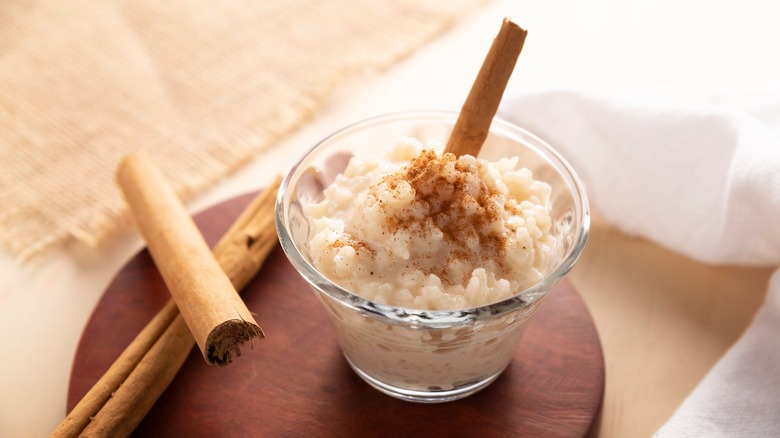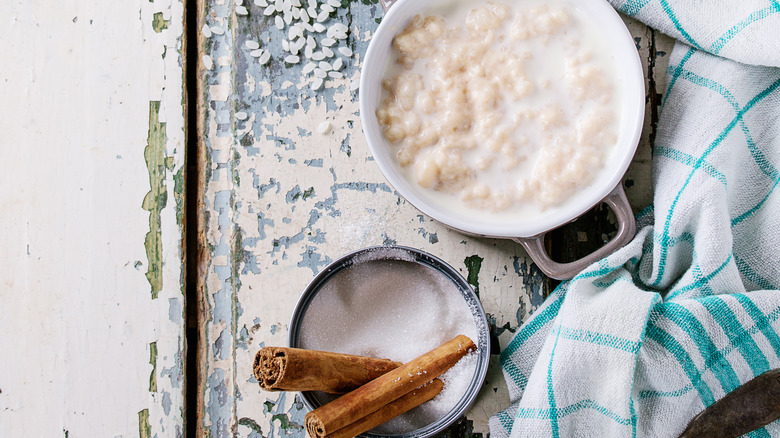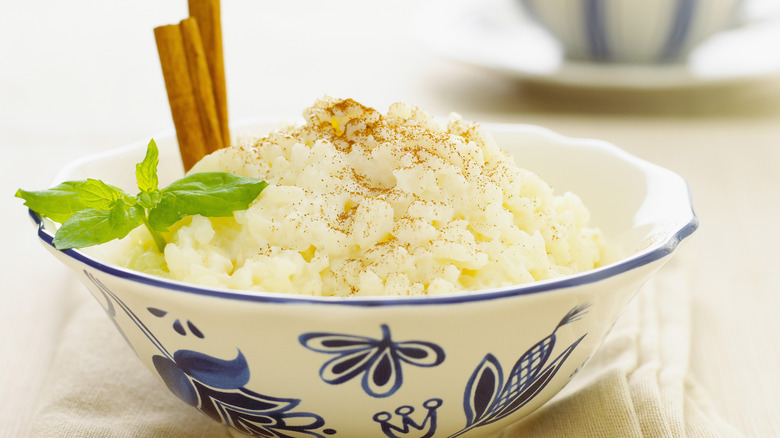The Absolute Best Type Of Rice To Use For Classic Rice Pudding
Mid-afternoon, you suddenly crave a cup of classic, creamy rice pudding. Standing before your pantry, you scan various rice containers, each of varying types and origins. Jasmine, Basmati, Arborio — oh my! So, which one will you pick to make your rice pudding: Long, medium, or short-grain rice? While each type of rice has its merits when crafting the classic, old-fashioned rice pudding, converted long-grain rice reigns supreme. Specifically, Basmati and Jasmine are the absolute best go-to options for pudding, boasting ideal creaminess and a satisfying texture.
The reason for using long-grain rice is it has sufficient starches while maintaining individual grain structure even after prolonged cooking and simmering, ensuring the pudding stays creamy without crossing into the realm of gluggy mushiness, which tends to happen to most short-grain rice. Using Basmati or Jasmine rice would also mean not needing cornstarch or other thickeners for your rice pudding. During the cooking process, long-grain rice allows for the decadent absorption of milk and sugar while holding its shape — a vital characteristic for a pudding aiming for nostalgia and comfort in every spoonful.
How to make creamy rice pudding with long-grain rice
Ready to make that rice pudding at home? The process begins simply enough with a cup of your chosen long-grain rice. Give it a good rinse under cold water until the water runs clear. Next, heat up some milk. Whole milk is traditional, but you could choose a dairy-free alternative like oat or coconut milk for a different flavor profile. The milk provides the pudding's base and will be absorbed by the rice during cooking, offering a richness that water alone could never achieve. You could also opt for heavy cream if desired.
Simmer your rice pudding mixture and sweeten it with sugar. A pinch of salt or a teaspoon of miso can balance the sweetness. The next step is to infuse your pudding with vanilla extract or a dash of ground cinnamon or nutmeg. Sometimes, egg yolks and mascarpone are added to the rice pudding mixture. As the mixture simmers away, keep an eye on the pot, stirring occasionally. You're looking for the rice to become tender and the milk to thicken into a creamy consistency. This low and slow process melds the grains, milk, and spices into the cohesive, velvety dish known as classic rice pudding. Once the cooking is complete, the result is a pot of rice pudding that's a warm hug in a bowl.
Short-grain Arborio rice is an exception
Now, while we feel strongly that long-grain rice is the best type of rice to use for classic rice pudding, Arborio rice presents a delightful conundrum in rice pudding. This short-grain variety defies conventional wisdom yet yields remarkable results. Arborio rice has a high starch content, providing natural creaminess to dishes. Thanks to its plump grains, you'll find it a top choice for chefs making dishes like risotto.
Its grains remain separate during cooking, avoiding the mushy fate that other short-grain varieties often meet when used in rice pudding. So, if you're in a pinch and only have Arborio at hand, don't fret. It will yield a rich, velvety, and silky rice pudding. So, the next time you're standing in your kitchen, puzzled about which rice to reach for, remember it's Jasmine, Arborio, Basmati, or bust.


